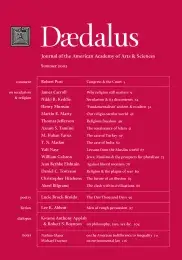Our religio-secular world
In recent decades, many experts have marshaled empirical data demonstrating a secular trend in modern societies. Still other experts, marshaling different data, have documented a resurgent religiosity in these same societies. As a result of these paradoxical findings, my bookshelf is crowded with contradictory titles: next to The Secular City is The Unsecular City; a volume that refers to Secular Man adjoins one exploring Unsecular Man.
Who is right? The answer, I believe, depends on the context of the question, the dimensions of the realities under discussion, and the perspective an author brings to the topic.
From my perspective – that of a theologian who has spent a lifetime pondering the impact of secularism on religion – we need a new model for describing the world that we actually inhabit. It is neither exclusively secular nor exclusively religious, but rather a complex combination of both the religious and the secular, with religious and secular phenomena occurring at the same time in individuals, in groups, and in societies around the world.
The old debates revolved around binary categories: societies were either secular or religious; worldly or otherworldly; materialist or spiritual; favoring immanence or transcendence, etc. The use of such polarizing concepts is valid in some contexts, but it does not adequately express the ways that individuals, groups, and societies actually behave; most people blur, mesh, meld, and muddle together elements of both the secular and the religious, the worldly and the otherworldly, etc. In adjusting to the complex world around them, people confound the categories of the social scientists, theologians, and philosophers: they simply ‘make do’ with a syncretic and characteristically modern blend of attitudes – call it religio-secular.
. . .
